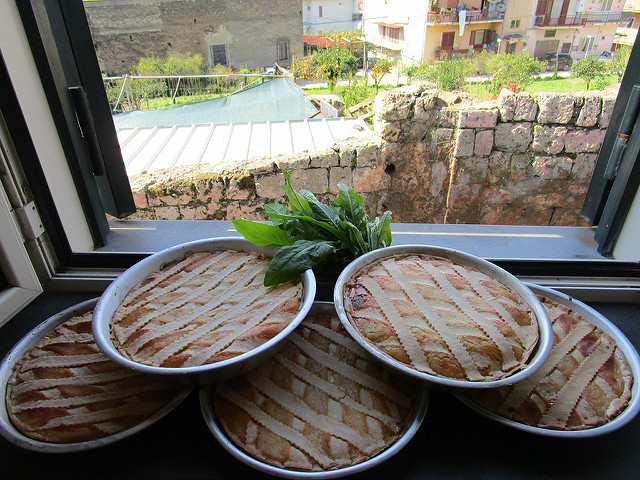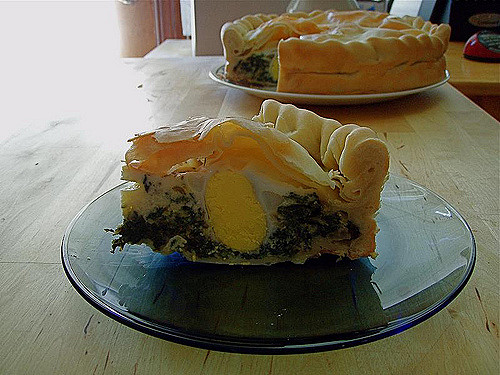People are preparing to celebrate Easter all over the world. Let’s see what is happening in Italy.
By Alessandra Ivaldi / 1.4.2018
Easter is the most important festival for Christianity, because it celebrates the Resurrection of Christ. According to tradition, it should be preceded by a period of abstinence and fasting lasting forty days, which is called Lent and aims to prepare the faithful for the solemnity of Easter.
The last Sunday before Easter is called Palm Sunday and recalls Jesus’ triumphal entry into Jerusalem, where he was welcomed by the crowd carrying palm branches in greeting. Therefore, palm branches – or olive branches, since palm is not so common in Italy – are still distributed to the faithful during Palm Sunday mass.
After Palm Sunday, the last week before Easter is called the Holy Week (settimana santa), which should be dedicated to silence and meditation. On Holy Thursday morning – which is the last Thursday before Easter – Chrism Mass is held in Italian cathedrals and the bishops consecrate the holy oils which will be used throughout the year during confirmations and baptisms or to ordain priests or practice the anointing of the sick.
Finally, during the night between Saturday and Easter, the Easter Vigil is held, which is considered even more important than Christmas Vigil, especially in the Southern regions, where this mass, celebrated with songs and rituals, can take up to three hours. However, those who could not participate in the Vigil can attend the Holy Mass on Easter morning. Since Easter still represents a very important feast in Italy, it is rare for people not to participate in at least one of these religious services.
During the days before Easter it is traditional for Italian families to exchange a particular kind of gift: chocolate eggs! Where does this delicious tradition come from? Do you think it is just an invention of the confectionery industry? Then you are wrong! Donating Easter eggs is an ancient tradition, which dates back to the Middle Ages. Naturally, in the past people did not donate chocolate eggs, but real eggs, which were painted for the occasion. In fact, eggs have always been a symbol of rebirth and in Christian culture they are deeply related to Christ’s Resurrection.
However, in addition to the “universal” chocolate eggs, Italian families have a wide variety of delicious dishes, both sweet and salty, which are usually offered on Easter in our different regions.
Let’s start with the colomba di Pasqua, which actually means ‘Easter dove’. It refers to two types of sweet dishes, the first of which, now famous throughout Italy, was invented in the 1930s by the Milanese company Motta, known for its confectionary and in particular for its panettone, produced in the Christmas period. The creation of the colomba was actually due to the intention to exploit the dough and machinery used to produce the Christmas panettone even in Spring. In this way the colomba was invented, a sweet dish whose shape is reminiscent of a bird, indeed a dove, which is a symbol of peace. The original dough includes flour, eggs, butter, sugar, candied orange and almonds. However, today there are different and more elaborate varieties of this recipe for those with a sweet tooth…

Colomba di Pasqua. Photo: N i c o l a | CC BY-NC-ND 2.0
The second kind of colomba is less famous, in spite of being connected to a more ancient regional tradition. In Sicily people used to exchange little sweet doves as Easter gifts, which are also decorated with colored sugar. Sometimes these doves also hold a little basket made of marzipan, in which people put a hard-boiled egg, in line with the more common tradition of donating Easter eggs.
Staying in the Southern regions of Italy, another ‘must’ during Easter holidays is the Neapolitan pastiera, a cake made with ricotta cheese, candied fruit, eggs, wheat cooked in milk and flavored with cinnamon, orange peel and vanilla.

Neapolitan pastiera. Photo: fagioniglio | CC BY-NC 2.0
According to a legend, the pastiera was created by the mermaid Parthenope, a character belonging to Greek mythology but who was ‘imported’ in ancient times into the Greek colonies in South Italy. Every spring she emerged from the water to greet the humans on the earth and to delight them with her marvellous songs. Her voice was so melodious that people ran towards the sea to celebrate the arrival of the mermaid. Once, seven among the most beautiful girls from the coastal villages were given the task to thank the mermaid by giving her flour, ricotta cheese, wheat, sugar and the spices which today are used to prepare the pastiera. Parthenope brought the precious gifts to the gods, who mixed them with their divine powers, thus creating something more pleasing than the mermaid’s voice.
Now let’s move to the North. The region Liguria offers another typical Easter dish, called torta pasqualina (literally “little Easter cake”). It is prepared by rolling out sheets of dough, alternating with a filling made with chard, onion, eggs, grated cheese and herbs. Moreover, whole eggs can be added and they will become hard-boiled during the baking of the cake; a further tribute to the Easter tradition of donating eggs as symbols of hope and rebirth.

Torta pasqualina. Photo: GabeD | CC BY-NC-ND 2.0





Recent Comments